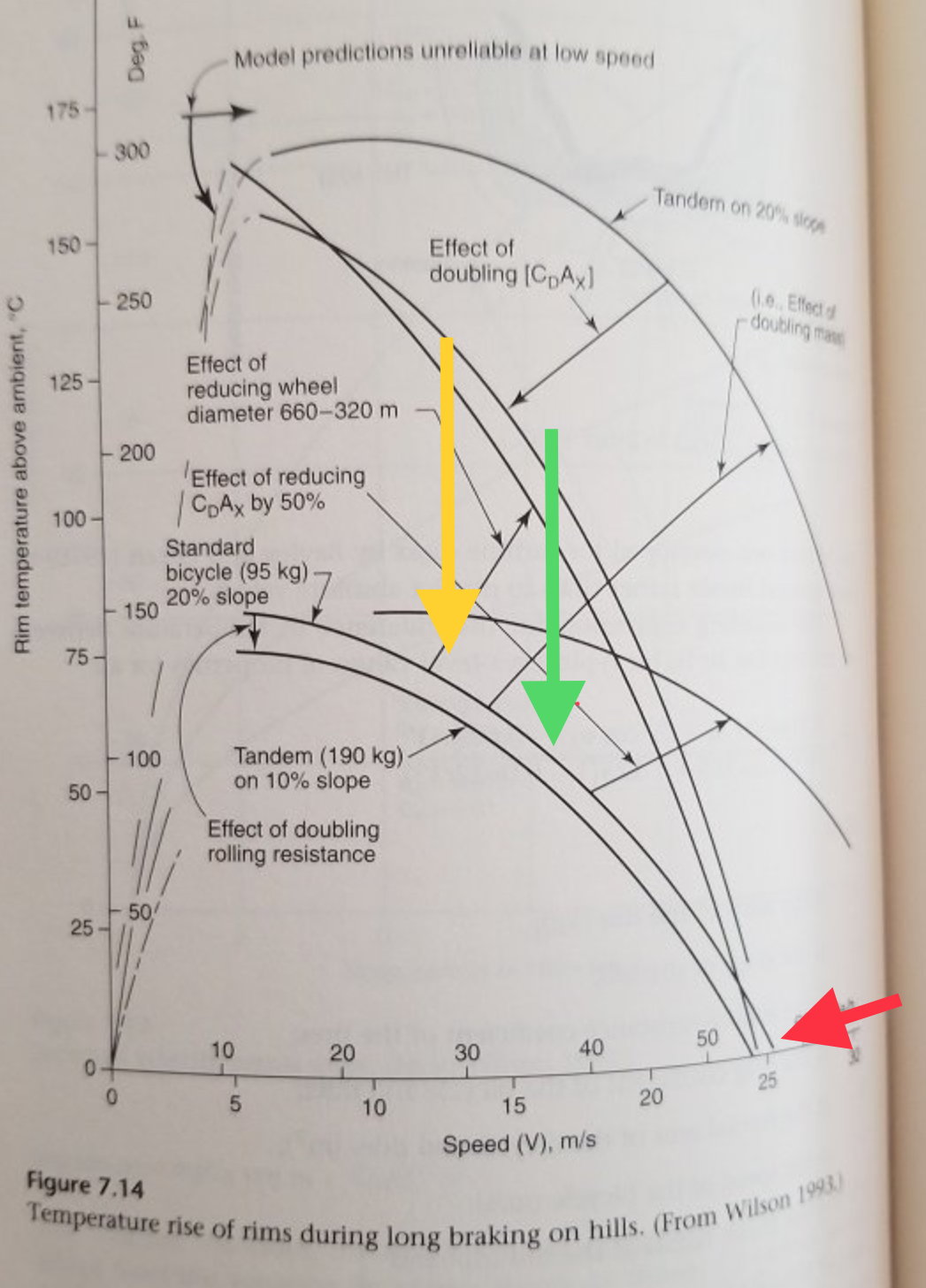Hahahaha.... That's what I was waiting for.
Mister I think there is no point in us continuing this. You're clearly living in another plane of existence where reality is irrelevant to you.
Good day to you.
Thatís your opinion. You are wrong.
______
Edit: I see you edited your post so in the interest of fairness I'll respond to your question. Order of coolest to hottest rims would be:
1. Downhill god no brakes 60 mph terminal velocity
2. Downhill god one pinky drag braking 59.5 mph
3. Pulse braker slinky riding between 60 and 40 mph averaging 50 mph
4. Drag braker maintaining 40 mph continuously.
Nope. But again your scenarios are wrong and ridiculous. Why would someone want to ďpinky dragĒ to keep their speed 0.5mph lower? Why would the pulse braker have to slow 20 mph? The only thing you have right is the drag brake scenario would have the hottest brakesÖby a whole lot.
Lower average speed = hotter rims.
And why is the lower average speed equivalent to hotter rims? Because the brakes are being used more. More brakes being used equals more heat being poured into the system. The less the brakes are being used, the cooler the rims stay for two reasons. One is because the air flow is higher but the other is that heat isnít being put into the system.
As you can see drag vs pulse is irrelevant. The drag braker can be cooler or hotter than the pulse braker. It depends on how hard they drag. Average speed is the only relevant factor.
No, the drag braker isnít going be cooler or hotter than the pulse braker. Someone dragging the brakes isnít going to go as fast as someone who isnít using the brakes. The average speed could be the same but the average heat input of the two systems isnít going to be equivalent. One is losing heat between applications of heat and the other is loosing less heat.
For a graphical illustration refer to the chart IPassGas generously provided a few posts above.
That graphic is only relevant for drag braking. Itís states quite clearly that it is about the constant application of brakes. Perhaps Wilson didnít know about pulse braking or he didnít include it in the graph because it is harder to model. We can still use the graph to look at the effect of pulse braking vs drag braking, however. Letís say that someone is riding down the slope in the graph at 30 mph through the constant application of the brakes (yellow arrow). The temperature rises to about 70įC over ambient and stays there. Itís constant from the top of the hill to the bottom.
Now letís say the brakes arenít used at all and the bike is allowed to run to terminal velocity (red arrow). The temperature rise is zero over ambient.
Now letís say that someone is pulse brakingÖyour so called ďslinkyĒ brakingÖ(green arrow). They apply the brakes and momentarily slow from 60 mph with zero temperature rise over ambient to 40 mph with a temperature rise of up to about 60įC over ambient. But they get off the brakes, gain speed and are back up to 60 mph. The rims have zero input of heat and quickly fall back to ambient temperature. Iíll agree that there could be some latent heat which would rise the temperature slightly over ambient but it would be small compared to the heat poured in by constant braking. And the longer the bike stays at 60 mph, the cooler the rims will be come. The main point Iíve been making (for a week

) is that the temperature of the rims doesnít raise as much as if the brakes are left on continuously.
